A foggy, frozen January day in the North Country. Overcast skies, no wind, 14 degrees, a perfect morning for snowshoeing. Photos only; no distracting text.



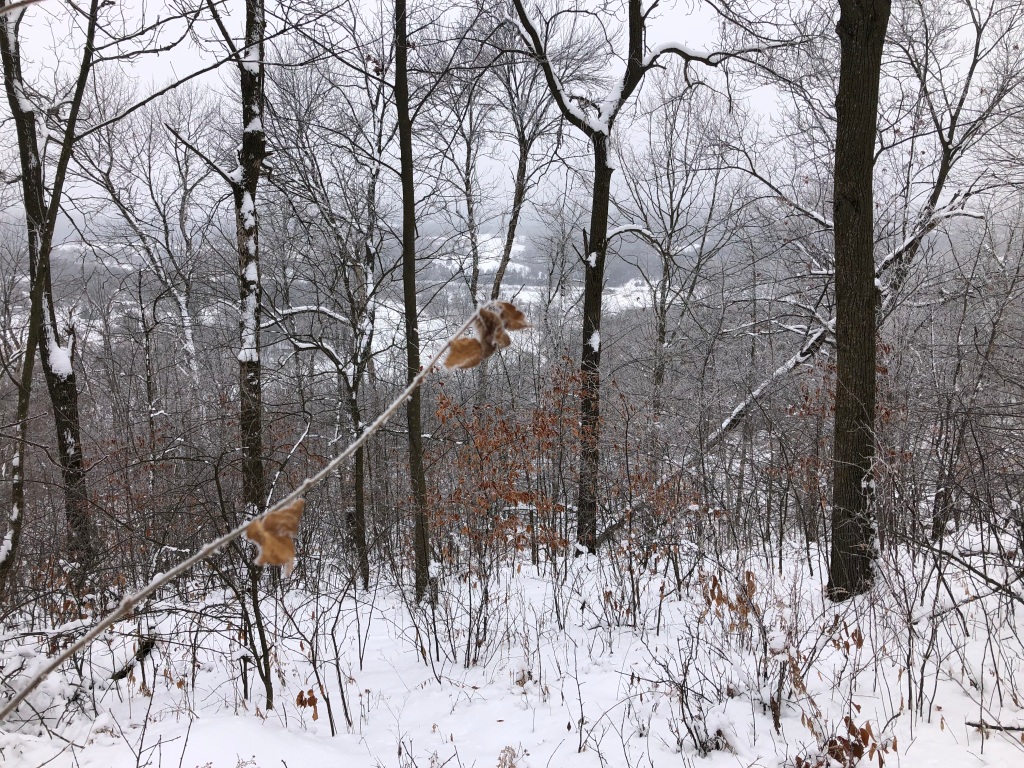







A foggy, frozen January day in the North Country. Overcast skies, no wind, 14 degrees, a perfect morning for snowshoeing. Photos only; no distracting text.











Our move from our North Country farm to our new home in the city requires more packing than we expected. We discovered that during our 37 years in this old log house we have accumulated a whole lot of stuff.
Cardboard boxes full of stuff. Wooden cartons full. Plastic storage tubs full.
Seventy-three of them so far. More waiting to be filled. Boxes and cartons and tubs, oh my!
Furniture, clothing, kitchenware, bedding, towels and washcloths, bathroom paraphernalia, throw rugs, lamps, books, picture albums, and file folders. We have barely begun the task of packing dishes and cookware, but most of the wall decorations — framed prints and photos and ceramics — are wrapped in padding and set aside.
The hand tools and power tools in the workshop are packed, along with extension cords, ropes, battery chargers, bottles of oil and cleaning solvents, work gloves, and the measuring tapes that I now need and cannot find.
The Clubhouse seems empty with all the outdoor gear boxed and bundled: boots, mukluks, waders, snowshoes, coats, hats, vests, and miscellaneous equipment. Most of my firearms and all of my shotshell and rifle cartridge reloading equipment and supplies have been sold or given away.
The retired bows and arrows mounted on the south wall and the threadbare gun cases hanging from the LP gas pipe in the corner complement the silent vault of the gun safe where a half dozen of my “family heirloom” and “memories” firearms still reside. Those — like my birddog Abbey and me — surely have a few seasons of adventures afield in our futures.
This week we asked bids from moving companies. We cautioned them our steep, curving driveway could be difficult for a26-foot truck to negotiate in March when county roads are often ice-covered. They said it would not be a problem.
We shall see.
Moving has forced us to get rid of hundreds of items that we no longer need. Several dozen plastic Star Wars action figures, for example.
But there are a few things, despite their well-used and run-down condition, that we will keep. My decrepit old recliner will make the move with us. Time is too short to break in a new one, and Abbey is accustomed to the scent of cigar smoke and spilled beer.
________________________________
In keeping with a 10-year tradition, the folk song “Auld Lang Syne” is my final post of the current year on the Dispatches from a Northern Town blog.
“Auld Lang Syne” was written in 1788 by Scots poet Robert Burns (1759-96) who is regarded as the national poet of Scotland. Burns often collected folk songs from across Scotland which he revised and adapted. “Auld Lang Syne” is based on one of these songs.
In 1799, Burns’ poem was set to a traditional tune which has become a New Year’s Eve standard. It is often sung on Hogmanay, the Scots word for the last day of the old year, and it is also recited and sung during celebration of New Year’s Day.
The poem’s Scots language title may be translated into standard English as “old long since” or less literally as “days gone by,” “times long past,” “once upon a time,” or “olden times.” As it is sung in the first line of the chorus, “For auld lang syne” is most often translated as “for the sake of times long past.”
Auld Lang Syne
Should auld acquaintance be forgot,
and never brought to mind?
Should auld acquaintance be forgot,
and auld lang syne?
For auld lang syne, my jo,
for auld lang syne,
we’ll tak’ a cup o’ kindness yet,
for auld lang syne.
And surely ye’ll be your pint-stoup!
and surely I’ll be mine!
And we’ll tak’ a cup o’ kindness yet,
for auld lang syne.
(Chorus)
We twa hae run about the braes,
and pou’d the gowans fine;
But we’ve wander’d mony a weary fit,
sin’ auld lang syne.
(Chorus)
We twa hae paidl’d in the burn,
frae morning sun till dine;
But seas between us braid hae roar’d
sin’ auld lang syne.
(Chorus)
And there’s a hand, my trusty fiere!
and gie’s a hand o’ thine!
And we’ll tak’ a right gude-willie waught,
for auld lang syne.
For auld lang syne, my jo,
for auld lang syne,
we’ll tak’ a cup o’ kindness yet,
for auld lang syne.
Dougie MacLean performs “Auld Lang Syne”

“…there is no response to art so genuine as the desire, the often heart-rending pull, to be within the work.”
– Jim Harrison, from his novella “Julip”
In the distant background, where a low slope rises from the shallow pools of the marsh toward the aspen forest uplands, the herd of caribou tempted me to step through the time portal of the frame, back to a world that had never known a human footprint, never endured the savagery of the ultimate predator homo sapiens. Those unsuspecting caribou triggered my urge to hunt, along with the flock of geese taking wing from some unseen pond, perhaps put to wing by a pair of hunting foxes.
This framed print that I received as an early Christmas present is an illustration created by the paleoartist Beth Zaiken, an award-winning designer, creator and artist who specializes in reconstructions and visual artworks of modern and extinct wildlife, artistic and scientific recreations of animals and habitats that once predominated the Earth. The title of this piece is “Two Million Years Ago, Greenland.” The print is a representation of the landscape of the northern tip of the island that would become known as Greenland as it existed during the Quaternary period of the Cenozoic era.
No one who has lived in the previous million years would recognize this landscape, this environment. But I am nonetheless entranced by this artwork, genuinely desiring to be part of it, pulled to be within it. The mastodons are terrifying, and with my tribe of hunters, I desperately want to stalk one of these elephantine giants, bring it down, flay its hide to build a tipi, devour its coarse red meat seared over a campfire, and carve exquisite scrimshaw on its tusks that will tell the story of our great mastodon hunt to future generations. Although I know that no human hunters ever intruded on this scene.
Homo sapiens, modern humans, the current epitome of hominid evolution and the only surviving hominin species, has walked the Earth for only the previous 300,000 years. Depending on one’s characterization of the physical and mental traits that define human, we might include Neanderthals (H. sapiens neanderthalensis) and extend humankind’s presence to about 800,000 years ago. Still just the blink of an eye in the geological age of our planet. And about 1.2 million years too late to have hunted these Greenland marshes.
That does not inhibit my fantasies, my desire to walk into this print.
In addition to dozens of other paleo artworks, Zaiken has created a mural titled “Pleistocene Boreal Bog” for the New York State Museum (https://bethzaiken.com/new-york-state-museum-boreal-bog-mural) that I feverishly covet as a wrap-around print on the walls of the family room in our new home in Rochester, Minnesota. The obvious danger is that I would disappear into the Pleistocene geological epoch that lasted from 2.6 million to 11,700 years ago, the period that includes Earth’s most recent Ice Age and archeology’s Paleolithic Age (Stone Age) of prehistoric humankind.
If I could undergo mutation to my 20-year-old self, I would be more than willing to take that risk.
More of Beth Zaiken’s works can be viewed at https://bethzaiken.com/
A few of her prints are available at https://society6.com/art/2-million-years-ago-greenland
______________________________________________
A thick fog settled over the North Country last night, and when temperatures dropped below freezing a half-inch of frost coated the woodlands and pastures. Three inches of soft snow began to fall at dawn, adding to the wild lands’ winter decorations. A solid overcast sky with swatches of gray, cream, and pink complemented the landscapes’ cloak of white, and on our morning walk, to paraphrase Rudyard Kipling, the silence ’ung that ’eavy we was ’arf afraid to speak. This world is so incredibly beautiful.
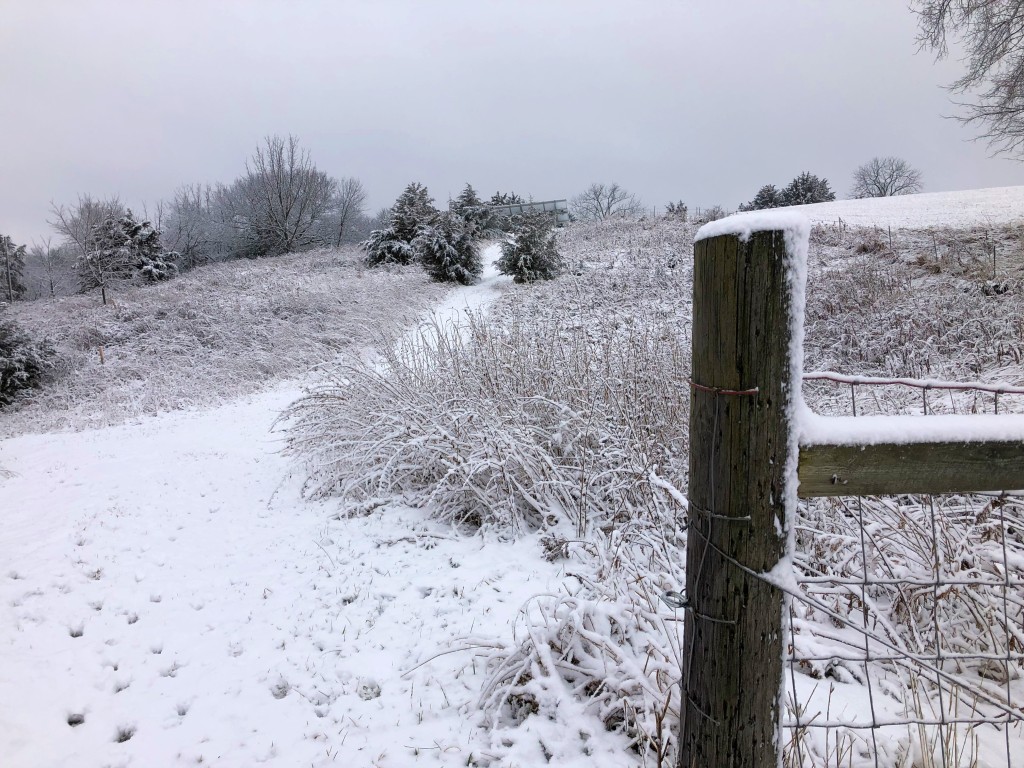










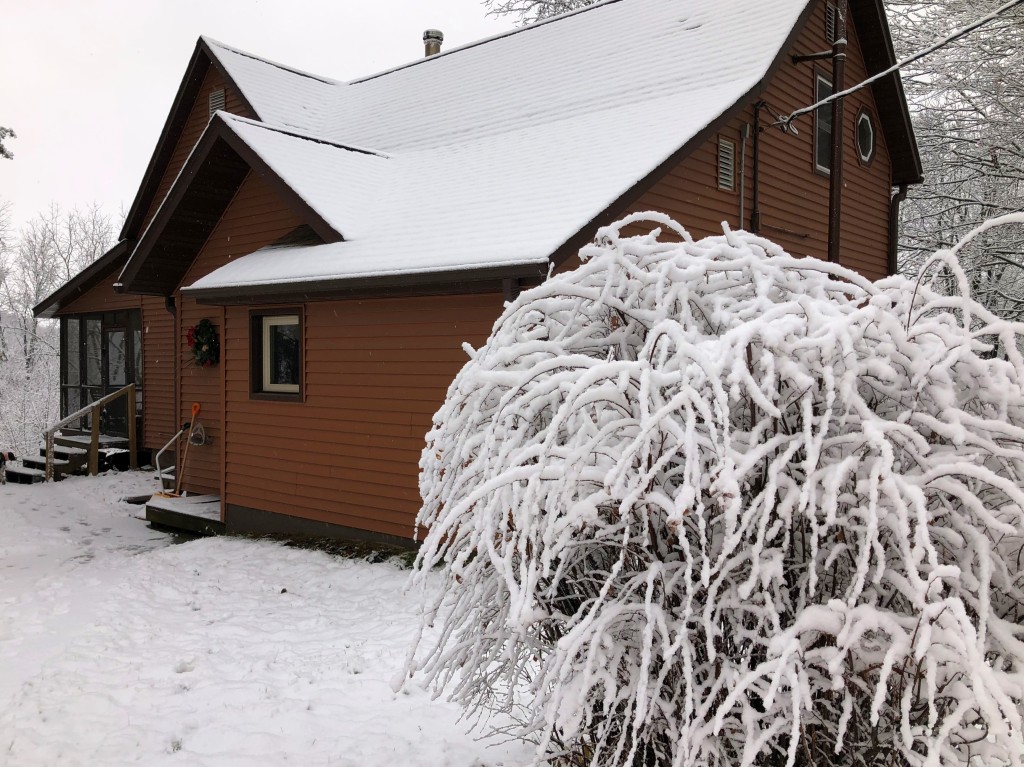
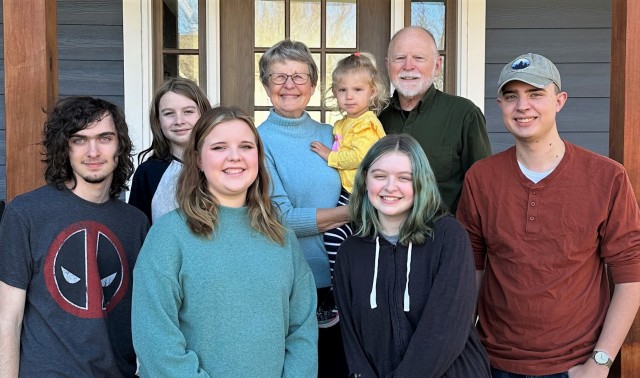
Gifts of time and love are surely the basic ingredients of a truly merry Christmas.
― Peg Bracken (1918-2007), American humor writer
It came without ribbons. It came without tags. It came without packages, boxes or bags. Maybe Christmas doesn’t come from a store. Maybe Christmas means a little bit more.
― Dr. Seuss (1904-91), Theodor Seuss Geisel, American writer and illustrator of children’s books
Christmas gifts for my grandchildren
Gift wrap, ribbons, and bows will not adorn the gifts I most want to give my grandchildren this Christmas season. The truly important gifts need no decoration or embellishment because they are not material things.
That does not mean they are not real. To the contrary, they are the most real and substantial and valuable possessions in my power to grant.
Technically, these are not Christmas gifts because they will not be opened under the ornament bedecked cedar tree in the big kitchen of our farmhouse Yuletide morning. These gifts will be unwrapped through the course of the coming years, on this day or that, in this place or another, with pomp and circumstance or with casual notice, some with joyful enthusiasm and some with somber contemplation. I may be there to witness some of the gift-sharing, but it is likely that the most valuable presents will come to light on a day of solitude.
Offering these gifts is easy for us codgers who have reached the time of life when we know the importance of sharing this stuff. Receiving them is the awkward part of the exchange because lacking the knowledge and insight we have gained from experiences, both good and bad, our grandchildren are usually bemused and often baffled by gifts that initially seem to have no practical use. They accept these strange gifts because they want to please Grandpa, and they do their best to seem grateful, but it may be a while before they come to regard them as something of great value.
Unlike the battery-powered toys that come out of brightly colored boxes and are playthings for a few weeks or months before they are dropped in a plastic tub and consigned to a storage locker, these gifts I want to give become more and more useful and functional over the years. They become more bright and shiny, they do not break or wear out, and their power never, ever runs down.
A grandparent can never know for sure, but we hope that someday these gifts, during grandchildren’s moments of recollection and reflection, will be remembered, understood, and cherished.
So what are these gifts exactly? Well, I would like to give each of my grandchildren a squirrel hunt on a brisk October afternoon to introduce them to the excitement and wonder and reality of hunting, of the blood sports. We live in a society where we are divorced from the natural world and its workings, the reciprocal relationship we all have with the Earth, the give-and-take, growth-and-harvest, birth-life-and-death cycle that involves all mortal beings. I want them to understand and respect that cycle so they will better understand all life is interconnected.
Toward the same end, I would like to give each of them:
– Days of tent camping in a primitive area where their sustenance and comfort depends on their energy, ingenuity, and mutual work.
– The opportunity to learn the woes and wonders of cooking over an open fire.
– An evening at a music concert and another at a live stage production, hopefully with a chance to meet the performers, so they can imagine their own powers of creativity and expression.
– A night on the prairie under the stars.
– A few lessons in how to train a puppy to behave as a considerate and respectful member of the family.
– A long afternoon of kite flying.
– Encouragement to memorize a favorite poem. (Limericks don’t count, although it is good to know several of those, too.)
– Lessons on recognizing different species of trees and shrubs – and prairie grasses and forbs.
– Bird-watching days with their grandmother to learn to identify different species of birds, especially the hawks and owls, which I do not claim to do well.
I also want to give them hands-on instruction in:
– How to throw a curve ball.
– How to hit a curve ball.
– How to hoe a garden.
– How to tie a variety of fisherman’s knots.
– How to use a ratchet wrench without splitting your knuckles.
– How to call ducks. How to call varmints.
– How to operate a chainsaw.
– How to use an ax and splitting maul.
– How to handle firearms.
– How to sharpen a knife, arrowhead, ax, and brush hook.
– How to paddle a canoe, from both the front and back seats.
– How to write a simple declarative sentence and punctuate it correctly.
– How to shoot a bird on the wing.
– How to turn the 6-4-3 double play.
– How to drive a car or pickup with a manual shift transmission.
There are several gifts I would like to give but must find ways to grant these boons without their mothers knowing about it. For example:
– How to blow your nose without a handkerchief.
– How to spit correctly.
– How to smoke a cigar.
– How to cut your own hair with a pet clipper.
– How to whittle.
– How and when to use the appropriate swear words.
– How to do self-surgery and stitches on minor injuries.
– How to drink four cans of beer from the six-pack without your fishing buddy being any the wiser.
Probably the greatest gift I can give my grandsons is mastering the skill that has been the most beneficial of my life:
– How to marry the most beautiful woman in the world.
These gifts will require several “Christmas Days,” of course, but if I can deliver them all before my role as Santa Claus is played out and done, I will be one jolly old elf. Or at least a contented curmudgeon.
_____________________________________________________
Christmas gifts for my grandchildren was first published on my Dispatches from a Northern Town blog in December 2015.
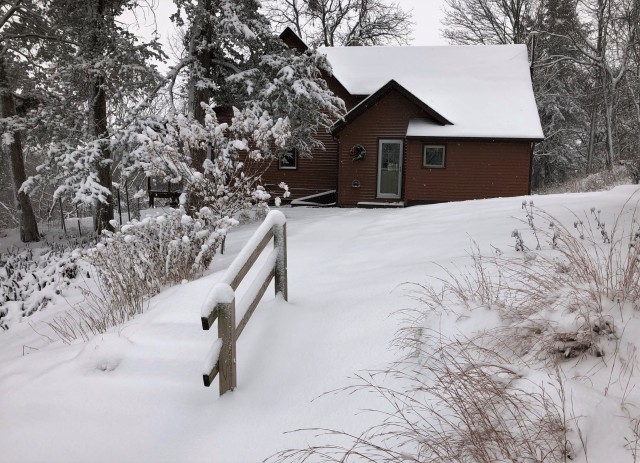





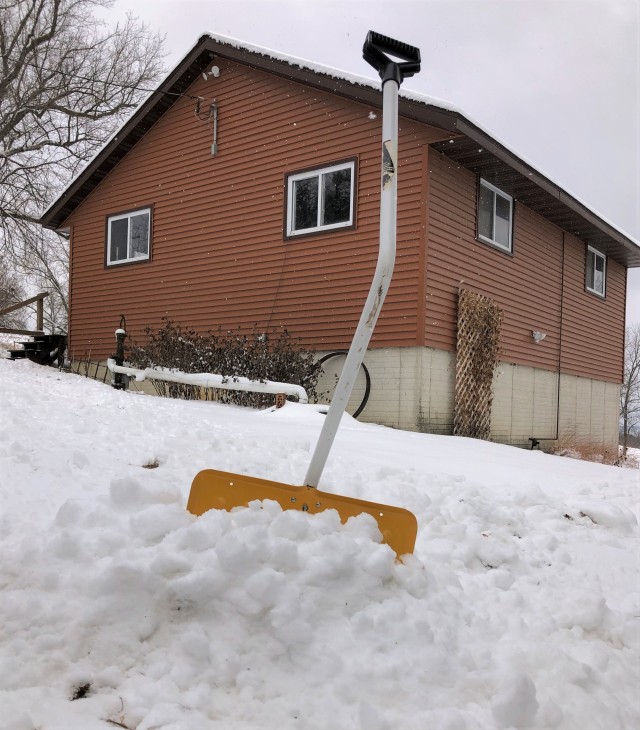
A double whammy.
A late November weather front swept in from the southwest today, bringing its rain-sleet-snow announcement that winter has come to the North Country and will hang on like a long-term visitor. That is to be expected, but the second blow of the one-two punch is Respiratory Syncytial Virus (RSV), a malady that medical websites describe as “a common respiratory virus that usually causes mild, cold-like symptoms.” Maybe it is just a common cold, but RSV sounds much more intimidating. A serious disease.
(I had no idea how to say “Syncytial,” so I visited another website that told me the correct pronunciation is sin-SISH-uhl. A fancy medical term for “a lot of sneezing and coughing and snot.”)
The rain-sleet-snow storm is welcome across the upper Midwest because most of us have been locked in a summer-long drought and we desperately need the precipitation. This storm will not bring enough to restore ponds, lakes and rivers to anything like their normal levels, but the not-yet-frozen ground is gratefully sucking down the moisture.
So I feel pangs of selfish guilt for complaining this weather has ruined a day of pheasant hunting for me. If I was as tough and bold as I was forty years ago, I would be out there hunting in spite of the storm. If I was as tough and bold as I was forty years ago, I would be doing all kinds of the crazy stuff that has made me what I am today: old, feeble, incapacitated, achy, slow, dull-witted, with an immune system that can no longer fight off a piddling virus like RSV.
My goal for the day is to drink 10 or 12 cups of tea to flush this ailment out of my body so that in a few days I can resume life as a chasseur with my French spaniel Abbey.
Which brings me to the educational element of this blog post.
Chasseur can be translated from French to English as hunter, but chasseurs à pied is more properly translated as light infantry, an important unit in Napoleonic army formations. (Bear with me here.)
I learned that on this snowy November morning while reading a history of the 1815 Battle of Waterloo, and I was shocked to discover that it was NOT (as I had long assumed) the French general Pierre Etienne Cambronne who spoke the most famous words of that world-changing battle. When a final French army assault by Napoleon’s select Imperial Guard was repelled with devastating losses by the musketry volleys of the English 1st Infantry Brigade, the battle was hopelessly lost. The English brigade’s commander major-general Sir Peregrine Maitland allegedly shouted:
“Surrender, brave Frenchmen!”
The commanding general of the Imperial Guard replied:
“La Garde meurt, elle ne se rend pas!” (The Guard dies, it does not surrender!)
Long known to historians as the words of Cambronne, that alleged reply to Maitland’s plea for surrender was in fact spoken by General Claude-Etienne Michel who commanded the 1st Chasseurs à Pied of the Imperial Guard. True to his word, Michel continued to fight and was killed.
The exchange of shouts between the generals is almost certainly apocryphal. If anything of the sort did occur, the few survivors of the 1st Chasseurs à Pied reported that Michel’s reply was a single word:
“Merde!” (Shit!)
Michel’s “La Garde meurt…” response is of course more gallant and glorious, more honorable in the military code of the early 19th century, but if any word was spoken, I have no doubt the word was “Merde!”
Probably because that’s how I’m feeling today.
_________________________________________________
Shot down in flames
On clear sky winter nights
I touch certain bright stars
with the tip of my index finger,
one eye closed as if sighting a rifle.
Not a single one has ever fallen
to the shot of my ocular bullet but
I have seen many flaming down in pain
to well-aimed shots of other sky shooters
on nights astronomers mistakenly call
meteor showers.
Linear errors
Logicians tell me “Just connect the dots!”
But the dots in life, as in the Universe,
are the hundreds of thousands of stars
visible in the midnight sky domed over
the Sandhills, and there are infinite ways
of connecting them, endless patterns
that can be created by linear alignments,
some random, some cautious, some reckless,
some beyond all sense of balance or symmetry.
Best to connect the dots with looping, curling,
swirling lines of spontaneity and serendipity.
No one has ever lived in a linear Universe.
Snow, freezing rain, and a 15-degree cold front swept across the North Country this week, a gift from the Dakotas so that we would not feel excluded from the party. I was perfectly willing to stay in the Clubhouse, read, drink hot tea, and nap, but Abbey would have none of that.
She moped. She whined. She cried. She tugged at the cuffs of my pants. “Okay, fine!” I scolded. “But this will be a miserable day of hunting, and you get all the blame.”
I called a bird-hunting friend to help me enjoy the pleasant weather. “Perfect day to hunt roosters,” I said. “They will be hunkered down tight under the snow,”
He said “No!” I asked to speak to his dog. The dog said “Oh hell yes!” A bird hunter is wise to stay in the good graces of his dog. If you disrespect a bird dog’s opinions, it has ways of getting even.
We spent a couple hours battling 15 mile-per-hour winds, which our faces and hands told us was the wind chill equivalent of zero degrees Fahrenheit. The pheasants surely must have retreated from the cornfields into the heavy, protective cover of CRP ground, we reasoned. But we found none. Slogging through native grass stands with a coating of ice and snow was another challenge for old legs.
No pheasants. None. Not even a trace of scent, the dogs insisted. We took a shortcut across the center of a hilly quarter-section of CRP and discovered — lo and behold — a scraggly wildlife food plot of stunted corn and weeds. Mostly weeds.
There we did indeed find pheasants. Lots of pheasants. A dogs-gone-crazy-with-scent cluster of pheasants. Abbey was in that tangle somewhere — but where? I found her on point. One rooster exploded out of the snow under her nose. Two, three four five, six. I lost count. Many, many pheasants.
We shot at four and knocked them down. Abbey had to root the wounded birds out of the matted tangle of grass and weeds and snow and ice where they had burrowed to escape. They did not succeed. I once read that a bird dog has at least 4,000 times as many olfactory sensors in its long and expansive nasal cavity as does a human. I believe it. Without Abbey’s nose, we would not have found a single one of those pheasants. Aided by her nose, we found them all.
One was still a difficult retrieve. Flush out and chase. Burrow under and search. Another chase. Finally, I threw myself on top of the rooster and grabbed its tail. There was much squawking, beating of wings, kicking of sharp spurs, shouting, and feathers-flying wrestling.
“That was hilarious!” Abbey laughed as she sat beside my prostrate body. “Hand me the bird before you get up. If you CAN get up.”
“Here’s your bird!” I snapped. “And of course I can get up! Probably. Now, help me look for my gun.”
I got even. Back home, I made Abbey pose with the dead pheasants. She hates this ritual.
“Are you glad I made you go hunting?” she asked.
“Ask me again this evening. After I take a couple doses of Tylenol.”
___________________________________________